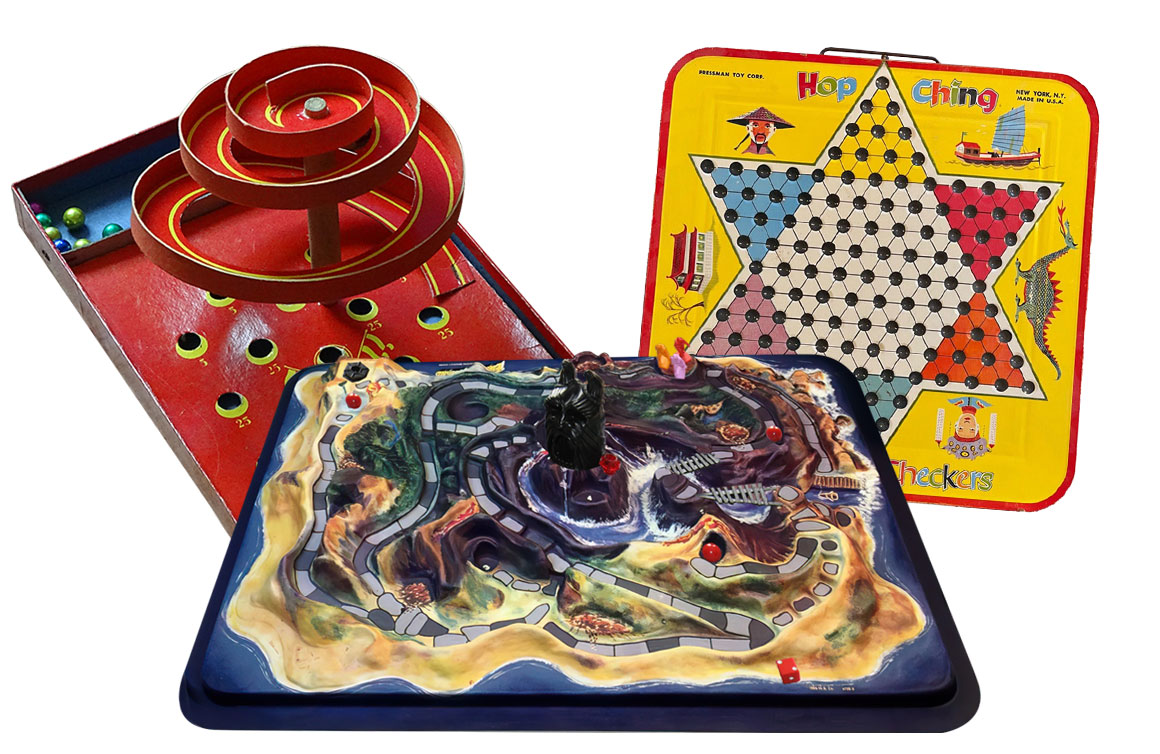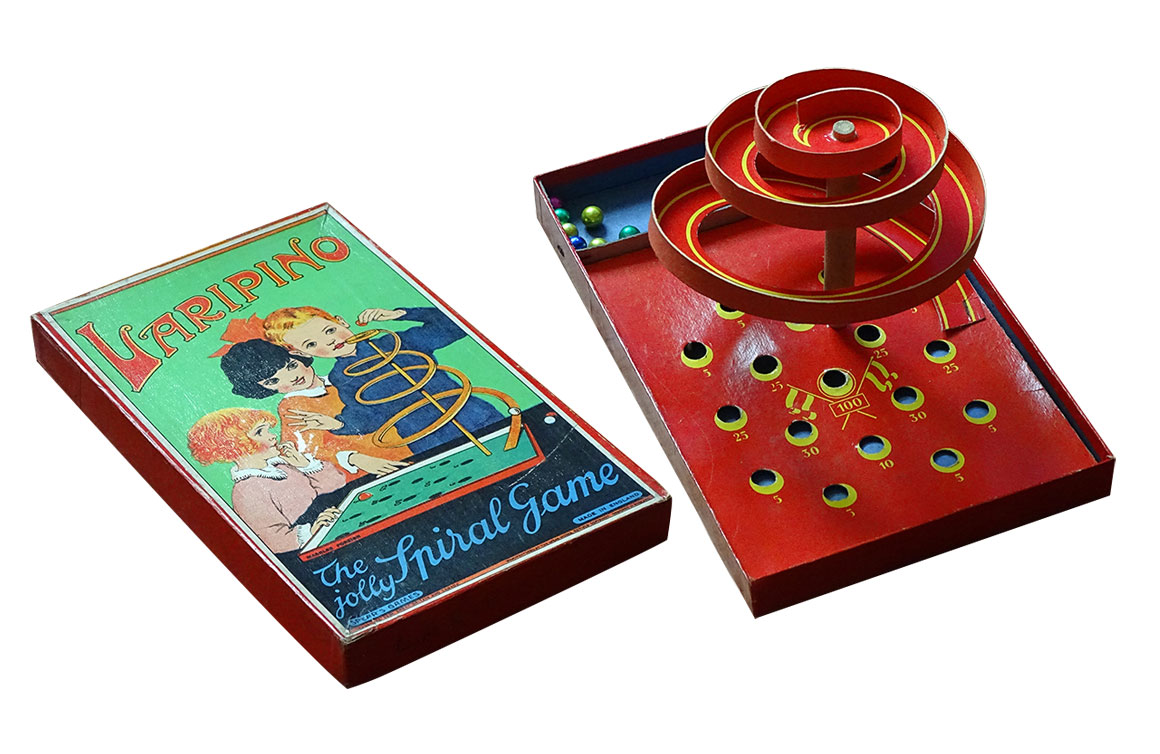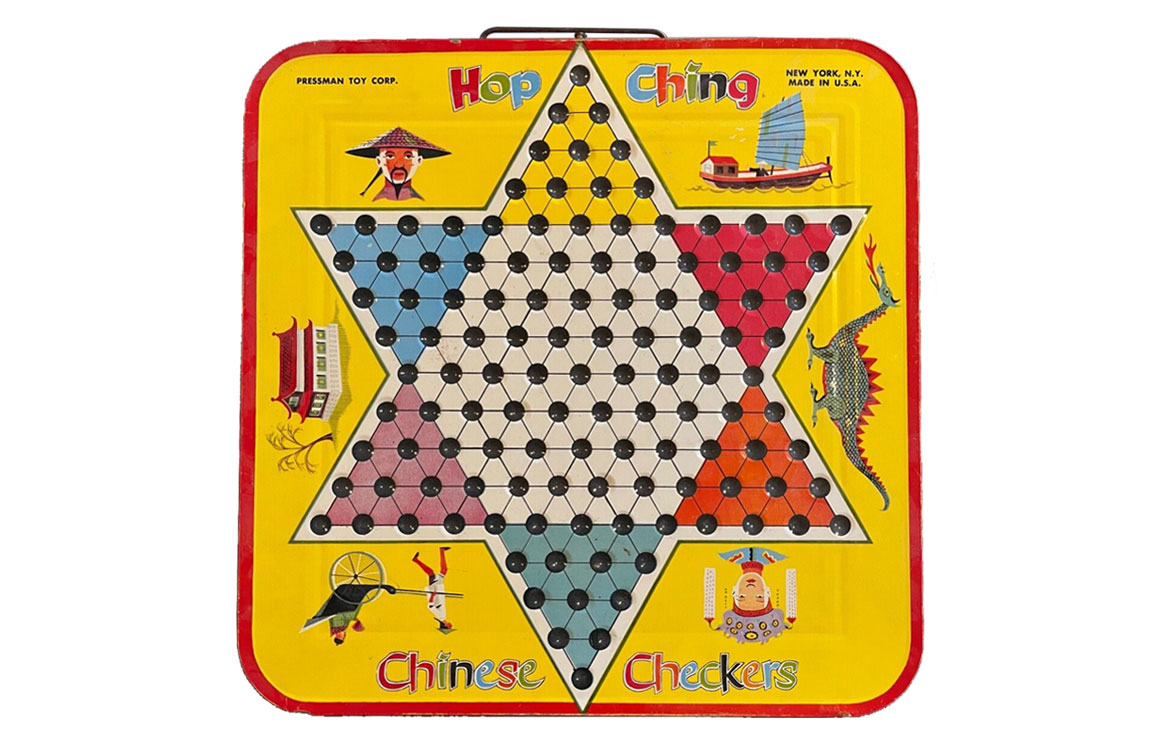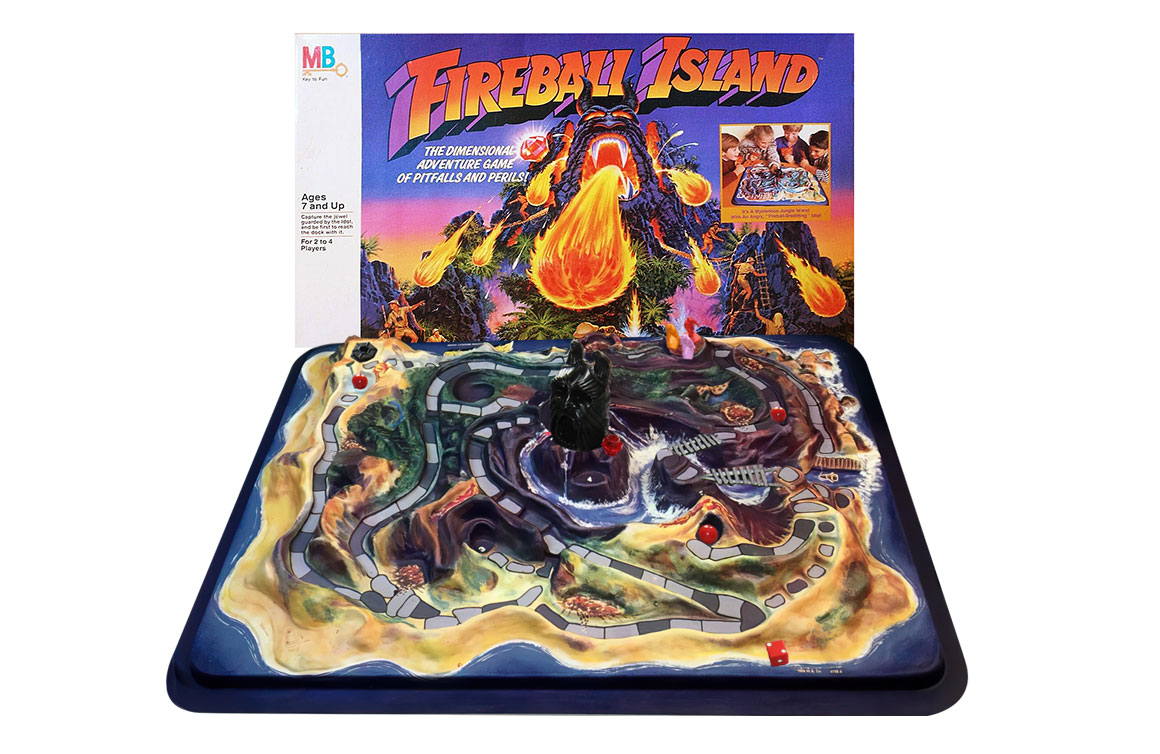Marbles? There can’t be that many good games with marbles, can there? In fact, the unique qualities of marbles make them perfect accessories for certain games for youngsters as well as clever design elements for some of the best strategy games. It’s also important to remember that marbles—as in “shooting marbles,” are a classic, and also ancient, game of their own.
There are hundreds of marble games for young children. If kids are old enough to know not to ingest them, they can choose from many standards and newcomers.
Larpino
A game of English origin, usually called Larpino, is just one example. Traditionally made of cardboard, the game utilizes a paper or cardstock concentric ramp, upon which a marble is placed and then rolls down to score a completely random point. There is no skill involved, and the game is considered only basically educational, as players must add their scores to determine a win. But Larpino relates to hundreds of games old and new which rely on the mathematical concept of the spiral and rolling marbles or steel balls to score points.
Chinese Checkers
We hear “it’s neither Chinese nor checkers” in reference to Chinese checkers, a classic strategy game from which many games, and even video games, evolved. The game is based on another game, Halma, that was invented in the late 19th century by a doctor at Harvard. It became widespread in Germany, where it was changed from a square gameboard to star-shaped as Stern-Halma (Star Halma) allowing up to six players instead of four. That version came back to North America and was renamed Chinese Checkers by Pressman, which introduced it in 1928. Halma was traditionally played with tokens or pegs, but marbles were unique to Chinese Checkers. While it can be played with pegs, or now with bits and bytes, marbles are the customary playing pieces.
Fireball Island
One memorable game from 1986 became hugely collectible and was recently brought back to life by Restoration Games, a company specializing in classic game reboots. The original Fireball Island, including a moulded plastic mountain and dependent on gravity and orange marbles representing deadly fireballs, was a fan favourite then and is costly now if one can find it. Opponents place a marble in the mountaintop idol. The marble will randomly roll down the mountain, potentially knocking down or thwarting opposing players’ explorer pawns. Funded in just one hour on Kickstarter, the 2018 Fireball Island, the Curse of Vul-Kar, introduced new gameplay with less luck and more player agency — perhaps to appeal to 1980s teens who remembered the original but had graduated to more complex games as adults. The firm brought out five expansions, including The Last Adventurer, which introduces green snake marbles to add more complexity, fun, and marbles.
And more
The list of other marble games is far longer than what this article presents. From kids’ classic KerPlunk (beware the pointed sticks!) to the complex plastic Stadium Checkers with rotating concentric circles upon which players try to guide their colour-coded marbles. In 1965 The Amazing Dr. Nim introduced players to a simple, binary computer-aided marble game (think basic coding). 2021’s engine-building strategy game Golem uses marbles to randomize the actions a player takes on every turn.
Marbles still contribute to the fun of games for every age and on every level of gameplay. And, don’t forget that marbles are still sold by the bag. Draw a circle in the dirt and shoot!
Note: If you buy something using the eBay link in this story, we may earn a small commission. Thank you for supporting independent toy journalism!




